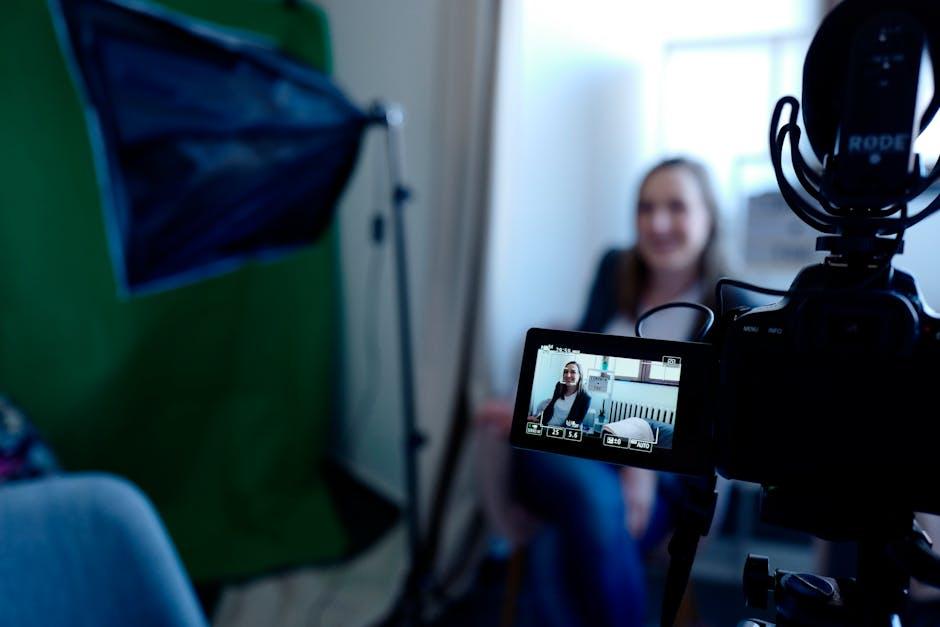Step beyond the polished final cut and into the hidden world where interviews take shape—the bustling sets, the candid moments, and the intricate dance of voices and cameras that bring stories to life. Behind every carefully framed shot lies a tapestry of preparation, spontaneity, and collaboration. This article peels back the curtain on interview shoots, exploring the unseen artistry and effort that transform questions into compelling narratives. Join us as we journey behind the scenes, revealing the subtle choreography that turns conversation into captivating content.
Table of Contents
- Setting the Stage Creating an Inviting Atmosphere for Authentic Conversations
- Mastering Lighting Techniques Crafting the Perfect Visual Mood
- Choosing the Right Equipment Balancing Quality and Practicality
- Directing with Empathy Encouraging Natural Responses and Comfort
- Capturing B-Roll Enhancing the Story with Complementary Footage
- Post-Shoot Review and Feedback Optimizing Future Interview Experiences
- Q&A
- The Way Forward
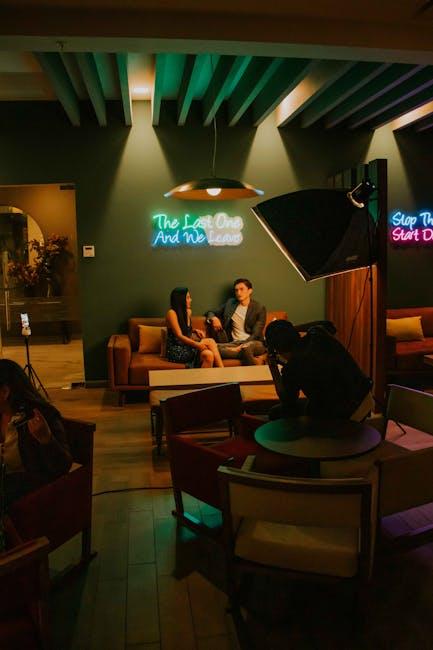
Setting the Stage Creating an Inviting Atmosphere for Authentic Conversations
Crafting an environment where genuine dialogue flourishes requires more than just a quiet room and a camera. It’s about sculpting a space that naturally eases nerves and sparks open-hearted exchanges. Soft lighting, comforting textures, and subtle background elements play pivotal roles. Imagine plush cushions, warm hues, and minimalistic decor that whispers calm rather than shouts distraction. These visual cues invite participants to shed their armor and step into an arena of vulnerability and trust.
Equally essential is the human touch behind the scenes. Before the cameras roll, a few simple rituals set the tone:
- Casual introductions that break the ice and build rapport.
- Sharing a coffee or tea to create moments of warmth and relaxation.
- Gentle reflections encouraging participants to express thoughts without judgment.
Such intentional pauses transform the shoot from a sterile production to a shared experience, sparking authenticity that resonates through every frame.

Mastering Lighting Techniques Crafting the Perfect Visual Mood
Achieving the right atmosphere in an interview shoot hinges on meticulous control of light, which sculpts the scene’s emotional tone and highlights the subject’s essence. Key to this is the interplay between key lights, fill lights, and backlights, ensuring shadows don’t overpower but rather add depth and dimension. Often, subtle changes like softening a light source with a diffuser or adjusting its angle can transform the visual narrative from stark and dramatic to warm and inviting.
- Key Light: The primary source shaping the face and setting the mood.
- Fill Light: Balances shadows for natural softness.
- Backlight: Adds separation from the background, enhancing depth.
Understanding how these elements work in concert allows for creative storytelling beyond words. For example, a cool-toned light can add a serious, contemplative aura, while warmer hues evoke comfort and openness. Below is a simple guideline to pairing light qualities with interview atmospheres:
| Lighting Quality | Visual Mood | Use Case |
|---|---|---|
| Soft, Diffused | Warm, Inviting | Personal Stories, Human Interest |
| High Contrast | Dramatic, Intense | Investigative, Serious Topics |
| Cool, Directional | Calm, Reflective | Thought Leadership, Expert Insights |
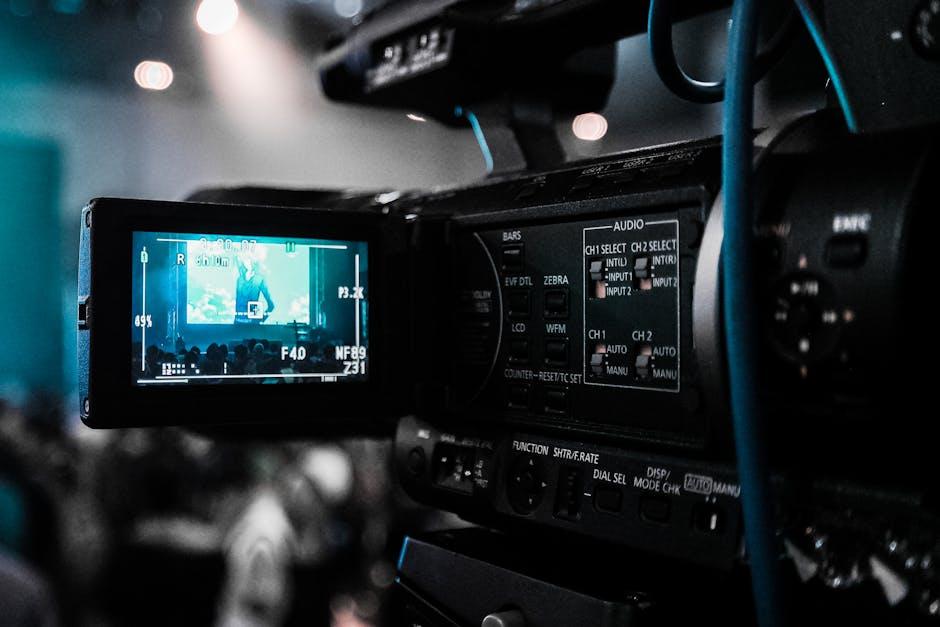
Choosing the Right Equipment Balancing Quality and Practicality
When preparing for interview shoots, striking a balance between top-tier quality and practical usability is key. High-end cameras and lenses deliver stunning visuals but can be cumbersome and cost-prohibitive in certain environments. Conversely, more accessible gear often offers ease of use and portability without severely compromising output quality. Consider equipment that pairs reliable performance with straightforward operation to keep the shoot smooth and stress-free. Think beyond cameras—audio capture devices, lighting setups, and tripods must align with the project’s demands and the crew’s expertise.
Focus also on versatility and adaptability, especially when shooting in dynamic locations. Items like LED panels with adjustable color temperatures and compact shotgun microphones can make a significant difference. Below is a brief comparison of essential gear categories to help clarify what suits different interview setups:
| Equipment | Pros | Cons |
|---|---|---|
| DSLR/Mirrorless Cameras | High image quality, interchangeable lenses | Can be heavy, complex settings |
| Compact Camcorders | Lightweight, easy setup | Limited lens options, moderate video quality |
| Lavalier Mics | Discreet, consistent audio capture | Requires wireless management |
| LED Lighting Panels | Adjustable brightness and color temp | May need additional modifiers |
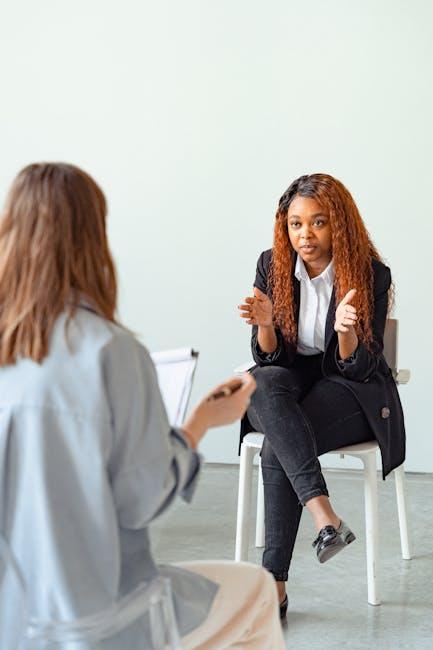
Directing with Empathy Encouraging Natural Responses and Comfort
Creating a safe space is pivotal to capturing genuine emotions and storytelling on camera. By prioritizing connection over commands, a director can foster an environment where interviewees feel seen and heard. This approach helps dissolve discomfort and invites authenticity, allowing for reactions that are spontaneous rather than rehearsed. Techniques such as mindful listening, subtle cues, and patient pauses become instrumental tools, effectively bridging the gap between performer and audience.
To cultivate this atmosphere, directors often employ simple yet powerful strategies:
- Inviting informal conversation before rolling to ease nerves.
- Encouraging personal stories rather than scripted responses.
- Using open-ended questions to spark reflection and deeper insight.
- Adjusting tone and body language to be warm and approachable.
| Empathy Technique | Effect on Subject |
|---|---|
| Eye-level framing | Balances power dynamics, promoting equality |
| Soft lighting | Creates warmth and reduces visual harshness |
| Timeouts between questions | Allows thoughtful pauses and natural reflection |
| Nonverbal affirmations | Builds trust without interrupting flow |
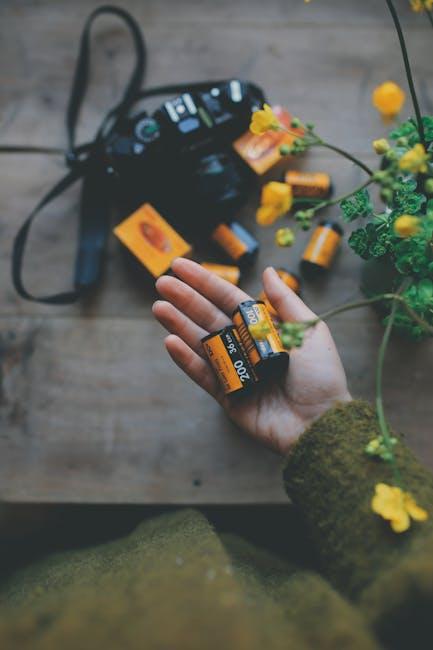
Capturing B-Roll Enhancing the Story with Complementary Footage
In every interview shoot, the magic lies not just in the spoken words but in the layers of visual storytelling woven around them. Complementary footage serves as the silent narrator, enriching the narrative by adding depth and context. From capturing the subtle hand gestures of the interviewee to the ambient sounds of the location, these shots build an immersive environment that keeps viewers engaged. Think of B-roll as the texture—allowing the story to breathe beyond the scripted dialogue. Whether it’s a close-up of a meaningful artifact or a panoramic view of the interview setting, these elements create a multi-dimensional experience that resonates emotionally.
Effective B-roll goes beyond mere filler; it supports the main footage and helps illustrate points that words alone can’t fully convey. When planning B-roll, consider these elements:
- Environment details: the setting, mood, and atmosphere
- Emotional cues: facial expressions, reactions, and gestures
- Related objects or actions: people interacting with their surroundings
- Cutaways for pacing: shots to smooth transitions or highlight key moments
Careful selection and creative framing of complementary footage can transform a simple interview into a compelling visual narrative, making every frame an essential part of the story’s fabric.
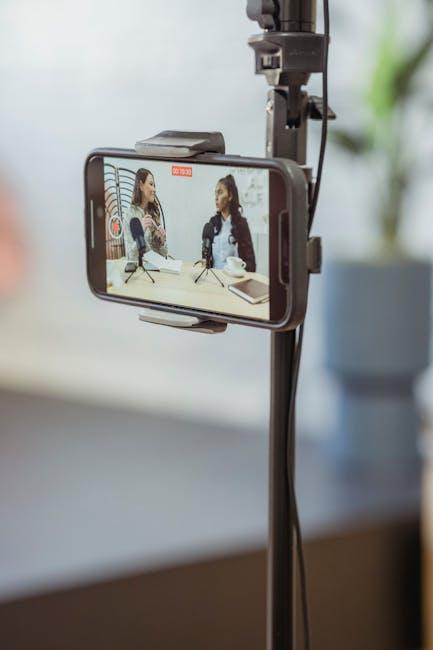
Post-Shoot Review and Feedback Optimizing Future Interview Experiences
After wrapping up an interview shoot, dedicating time to evaluate the footage and gather feedback is crucial for continuous improvement. Reviewing not only helps identify what worked well—such as lighting, framing, and subject comfort—but also uncovers subtle moments that could be enhanced in future sessions. Key areas to focus on include:
- Technical aspects: audio clarity, camera angles, background setup
- Interview flow: pacing, question effectiveness, natural conversations
- On-camera presence: body language, eye contact, energy levels
Collecting feedback from both the interviewee and the production team creates a holistic picture that drives optimization. This collaborative approach allows for fine-tuning elements from pre-shoot preparation through post-production. Below is an example of a simple feedback matrix used to categorize insights effectively, providing a visual guide to strengths and opportunities to refine:
| Category | Strengths | Areas to Improve |
|---|---|---|
| Technical Setup | Clear audio, consistent lighting | Reduce background noise |
| Interview Dynamics | Engaging questions, smooth transitions | Encourage deeper storytelling |
| On-Camera Presence | Relaxed posture, genuine expressions | Maintain consistent eye contact |
Q&A
Q&A: Behind-the-Scenes from Interview Shoots
Q1: What are some of the key preparations before an interview shoot?
A1: Preparation is crucial. This includes scouting the location, setting up lighting to flatter the subject, testing sound equipment for clarity, and ensuring that the background complements the interview topic. Additionally, prepping the interviewee with topic outlines and easing their nerves helps create a comfortable atmosphere on the day.
Q2: How does the crew handle unexpected challenges during an interview shoot?
A2: Flexibility is essential. Whether it’s sudden changes in lighting, technical glitches, or the interviewee’s mood shifts, the crew often adapts by improvising on-the-spot solutions. For example, using natural light creatively or revising questions to suit the flow keeps the shoot smooth and authentic.
Q3: What role does the interviewer play behind the scenes?
A3: Beyond asking questions, the interviewer is a facilitator and a listener. Off-camera, they build rapport with the subject to elicit genuine responses. Their ability to guide conversations naturally enhances the overall quality of the interview, encouraging storytelling rather than rehearsed answers.
Q4: How is the atmosphere managed to keep the interviewee at ease?
A4: Creating a relaxed, non-intimidating environment is key. This might involve casual conversation before filming, offering water or breaks, and playing light background music during setup. The team’s positive energy helps the interviewee feel safe and open, resulting in a more engaging dialogue.
Q5: What behind-the-scenes details often go unnoticed by viewers?
A5: Many might not see the meticulous framing to avoid distractions, the crew’s silent signals to adjust posture or expression, and the continuous monitoring of sound levels. Also, multiple takes and candid moments between scenes contribute greatly but rarely make it to the final cut.
Q6: In what ways do behind-the-scenes efforts impact the final interview product?
A6: The unseen efforts shape the audience’s experience profoundly. Good lighting, sound clarity, and a comfortable interviewee produce sharper visuals and deeper insights. These subtle factors transform a simple Q&A into a compelling narrative that resonates with viewers long after the shoot.
The Way Forward
Peering behind the camera lens reveals a world where preparation meets spontaneity, and every moment is a blend of art and craft. Interview shoots may appear seamless on screen, but it’s the unseen efforts—the lighting tweaks, the candid exchanges, the subtle adjustments—that breathe life into the final piece. As the curtains close on this behind-the-scenes glimpse, we are reminded that storytelling is as much about the journey as it is the outcome, inviting us to appreciate not just what is said, but how it comes to be shared.

